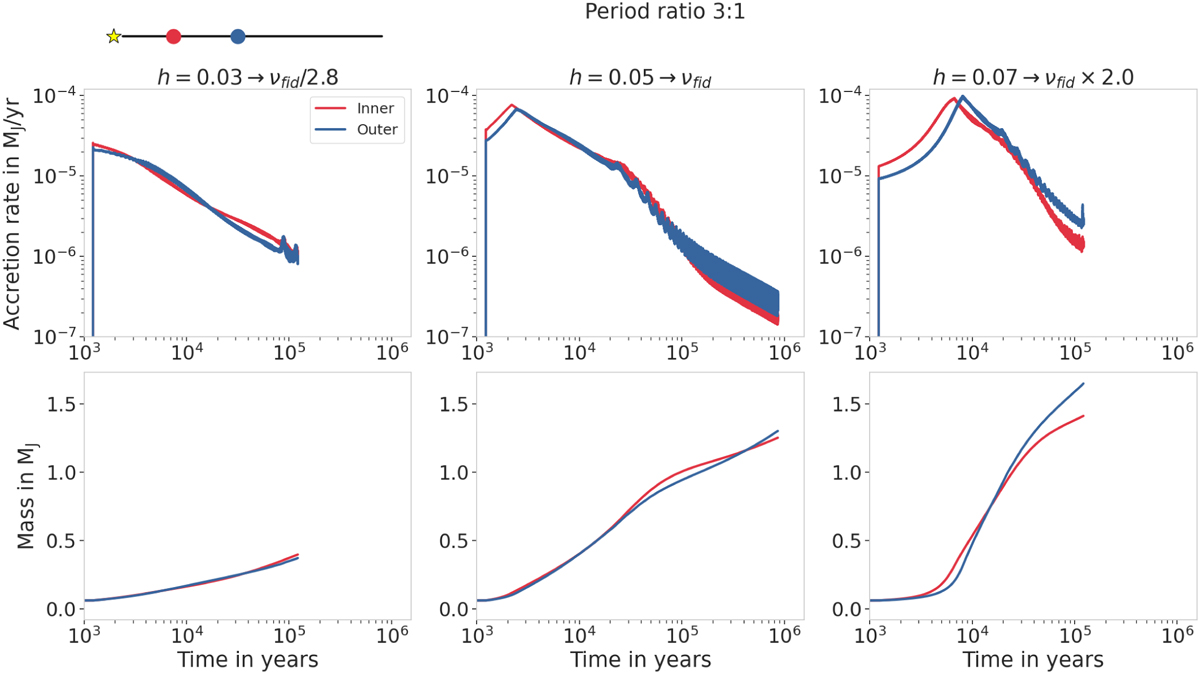Fig. 2

Download original image
Same as Fig. 1, but for different aspect ratios, increasing from left to right, with α = 10−3. We note on the top of each row the difference in kinematic viscosity caused by the change in the disk’s aspect ratio (v = αh2r2ΩK). The differences in the planetary accretion rates originate from the structure of the accretion formula itself (see Eq. (2)). At a low aspect ratio (h = 0.03, left panel), the accretion starts immediately in the second Machida regime. On the other hand, for h = 0.07, the change of accretion regime occurs at a higher mass and therefore at a later time, leading to a very different planet mass evolution.
Current usage metrics show cumulative count of Article Views (full-text article views including HTML views, PDF and ePub downloads, according to the available data) and Abstracts Views on Vision4Press platform.
Data correspond to usage on the plateform after 2015. The current usage metrics is available 48-96 hours after online publication and is updated daily on week days.
Initial download of the metrics may take a while.


